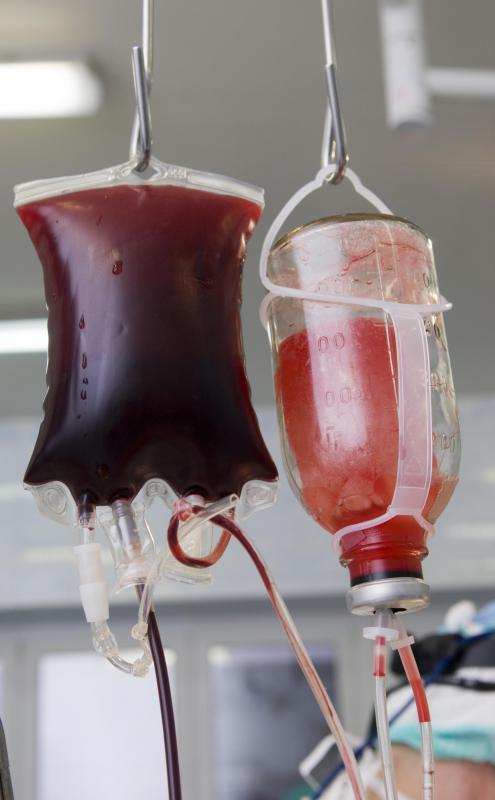At TheHealthBoard, we're committed to delivering accurate, trustworthy information. Our expert-authored content is rigorously fact-checked and sourced from credible authorities. Discover how we uphold the highest standards in providing you with reliable knowledge.
What Is the Connection between Strep and Sepsis?
Strep is a general term for an infection caused by a bacterium of the Streptococcus genus. Sepsis is a serious medical condition where a microbial infection affects the bloodstream or spreads throughout other tissues. Many different microbes can cause sepsis, including streptococcal species. Strep and sepsis, therefore, can be closely related.
Infections of the strep type typically involve the presence of the Streptococcus species, although sometimes the term can refer colloquially to illnesses with similar appearances. Streptococcus pyogenes is a common pathogenic species, and the condition known as strep throat, for example, is one of the diseases it causes. While strep throat is usually a mild enough problem that is not dangerous to health, in some cases, Streptococcus infections can be deadly.

Streptococcus bacterial cells are all spherical in shape under the microscope and tend to arrange themselves in chains or in twos. They can live in environments with or without the presence of oxygen, so they can adapt to many different body tissues, such as the lungs or the blood. Many different species exist in the group, and they do not all have the same virulence in humans. Some species, such as S. pneumoniae, prefer to infect the lungs, and S. mutans is more likely to infect the teeth and cause dental decay. In the context of strep and sepsis, Streptococcus pyogenes is a common offender as it has the ability to break down human blood for food and is easy to catch through aerosol droplets.

Many types of bacteria can cause sepsis, as can some fungi. Primarily, though, sepsis is bacterial in origin. The condition arises as a complication of an existing infection. In the case of strep and sepsis, the initial infection could be in a skin wound, from a medical implant, or from a site like the lungs. Organ transplant operations can also introduce strep and sepsis to the patient through environmental contamination.

Most healthy people have immune systems that are strong enough to fight off strep invasions, but sepsis is much more likely in people who are older or who have suppressed immune systems. Streptococcal species have various ways in which they can get around the immune system defenses. These include the production of toxins, which cover the cell with a variety of molecules so the immune system doesn't recognize the bacterium or become tools to break into host cells. Antibiotic resistance is another concern for medical professionals with regard to strep species.

Instead of just affecting one part of the body, sepsis is characterized by a spread of the bacteria throughout the tissues or through the blood. The immune system recognizes these widespread infections and begins the inflammatory response to combat the invading cells. A drawback to an intense inflammatory response is the increased risk of tiny blood clots that can prevent vital nutrients from getting to organs. Affected organs can then fail, and the circulatory system can become ineffective at pumping blood, resulting in death. Treatments for sepsis include antibiotics and intravenous nutrients.
AS FEATURED ON:
AS FEATURED ON:


















Discussion Comments
Don't forget viral infections. In fact, bacterial is most common, followed by viral, and then fungal.
Post your comments